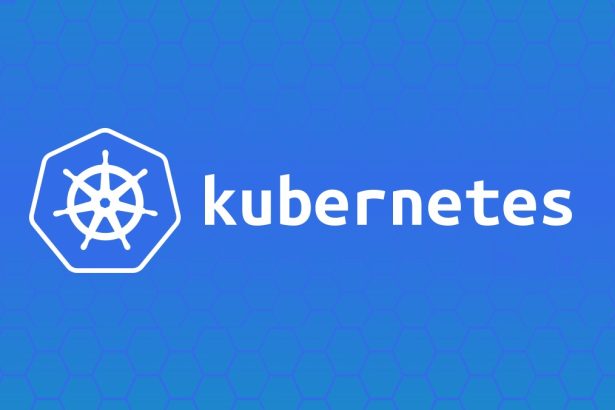Kubernetes, or K8s for short, has emerged as the backbone of modern software deployment and management in 2025. With its ability to automate the deployment, scaling, and management of containerized applications, it’s now a must-have skill for IT professionals, especially those in DevOps or cloud-native development roles.
This crash course takes you from the basics of containers to the orchestration of clusters, providing you with practical, step-by-step guidance along the way. Whether you’re a beginner or brushing up your skills, this guide will make Kubernetes approachable and actionable.
Table of Contents
1. What Is Kubernetes and Why Is It Relevant in 2025?
Kubernetes is an open-source platform designed by Google to automate the management of containerized applications. Since its creation in 2014, Kubernetes has evolved into a critical tool for deploying scalable, resilient applications across diverse environments. By 2025, K8s has solidified itself as an industry standard, with companies worldwide leveraging its capabilities to modernize infrastructures.
Why Is Kubernetes Essential Now?
- Cloud-Native Revolution: Kubernetes works seamlessly with cloud services like AWS, Azure, and Google Cloud Platform, driving scalability.
- Reduced Downtime: It helps with self-healing, ensuring reliability even if parts of the infrastructure fail.
- Supports Modern Architectures: Kubernetes is perfect for microservices, making development, deployment, and scaling easier.
- Increasing Demand for DevOps Skills: Proficiency with Kubernetes is now expected in roles like DevOps Engineer, Cloud Architect, and Site Reliability Engineer.
With Kubernetes, businesses guarantee flexibility and efficiency, turning it into a powerhouse for modern IT.
2. Step-by-Step Guide to Kubernetes Mastery
This hands-on guide will take you from understanding containers to managing Kubernetes clusters.
Understanding Containers
What Are Containers?
Containers are lightweight, self-contained packages that hold an application and everything it needs to run, including libraries, dependencies, and runtime environments. Tools such as Docker are commonly used to create and manage containers, which are the foundation of Kubernetes.
Example:
To create a simple container with Docker:
docker pull nginx docker run -d -p 8080:80 nginx
You now have an Nginx server running on http://localhost:8080. Congratulations, you’ve just launched your first container!
Introduction to Kubernetes Architecture
How Does Kubernetes Work?
Kubernetes operates through a decentralized system of nodes to orchestrate and manage containers. Its key components include:
- Master Node: Responsible for managing the cluster. The control plane includes the API server, scheduler, and controller manager.
- Worker Nodes: Execute applications and manage Pods.
Key Concepts to Understand:
- Pod: The smallest deployable unit in Kubernetes, representing one or more containers.
- Service: Exposes a set of Pods as a network service.
- Namespace: Logical clusters within Kubernetes, used to group resources.
Setting Up a Kubernetes Cluster
Setting up a cluster is the first proper step in Kubernetes deployment.
Tools You Need:
- Minikube: A lightweight Kubernetes implementation for local testing.
- kubectl: The command-line interface for connecting to and managing clusters.
Steps:
- Install Minikube following this guide.
- Start your cluster:
minikube start
- Connect kubectl:
kubectl cluster-info
Your Kubernetes cluster is now ready!
Deploying Applications on Kubernetes
To deploy an application, you use declarative configuration files or direct CLI commands to manage Pods and Services.
- Create a Deployment:
kubectl create deployment my-app --image=nginx
- Scale Your Deployment:
kubectl scale deployment my-app --replicas=3
- Expose the Deployment as a Service:
kubectl expose deployment my-app --type=NodePort --port=80
Monitoring and Managing Kubernetes Clusters
Monitor and manage workloads effectively with these tools:
- kubectl logs: View logs from running Pods.
- Kubernetes Dashboard: A web-based UI to visualize workloads. Install it with:
kubectl apply -f https://raw.githubusercontent.com/kubernetes/dashboard/v2.0.0/aio/deploy/recommended.yaml
3. Practical Examples and Commands
Command to view all running Pods:
kubectl get pods
Command to delete a Pod:
kubectl delete pod <pod-name>
Example YAML file for creating a Pod:
apiVersion: v1
kind: Pod
metadata:
name: my-pod
spec:
containers:
- name: nginx
image: nginx
Apply it using:
kubectl apply -f pod.yaml
4. Tips for Mastering Kubernetes
- Use a Playground: Platforms like Katacoda offer free Kubernetes simulations.
- Experiment Locally: Minikube and Kind are excellent local testing environments.
- Learn from Real Projects: Practice setting up CI/CD pipelines or deploying microservices.
- Official Documentation: The Kubernetes Docs are brilliant for deep-diving.
- Certification: Pursue the Certified Kubernetes Administrator (CKA) credential for a career boost.
5. FAQs About Kubernetes and Clusters
1. Do I need prior coding knowledge to learn Kubernetes?
Basic programming knowledge (e.g., YAML, JSON) and understanding of Docker are recommended but not mandatory.
2. Can Kubernetes work without Docker?
Yes, Kubernetes supports other container runtimes like containerd and CRI-O.
3. How long does it take to learn Kubernetes?
With consistent practice (1-2 hours daily), you can grasp Kubernetes basics within two weeks.
4. What are some good alternatives to Kubernetes?
Alternatives include Docker Swarm, Nomad, and OpenShift, though Kubernetes remains the industry leader.
Kubernetes is pivotal for building scalable, resilient, and cloud-native applications. By following this hands-on crash course and leveraging the suggested tools and resources, you’ll progress from containers to cluster management in no time! Start exploring Kubernetes today and stay ahead in your IT development career.

